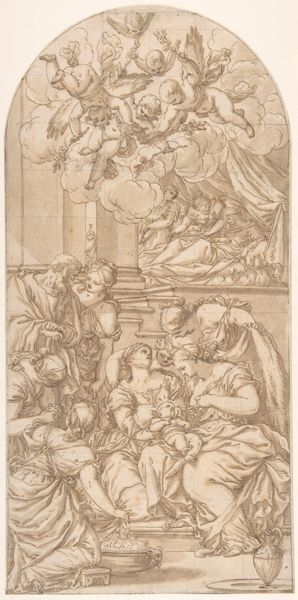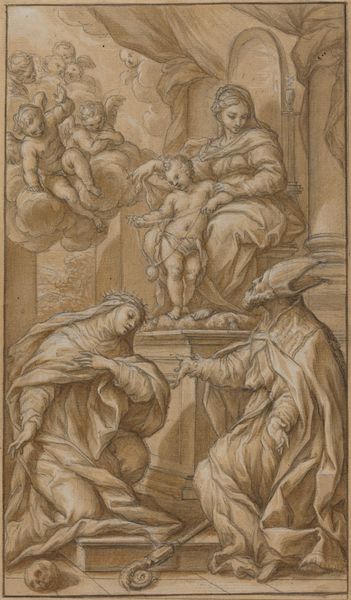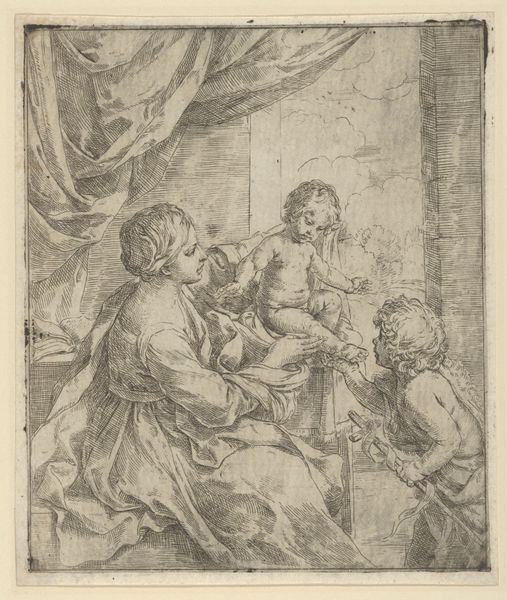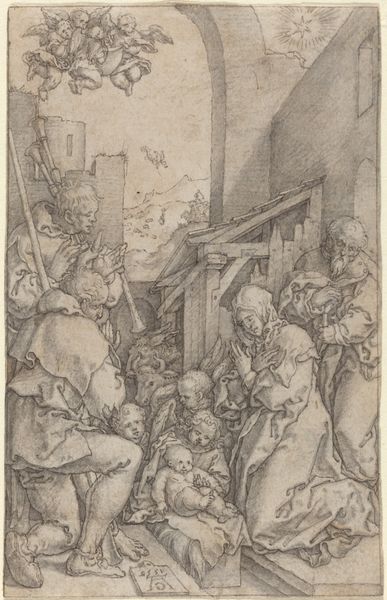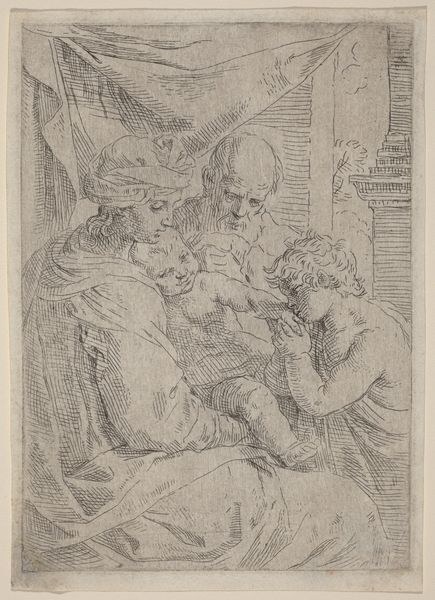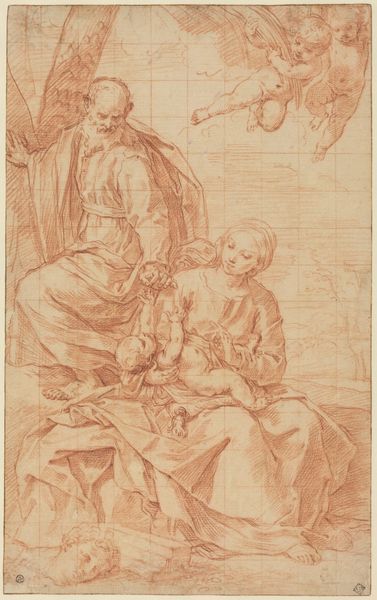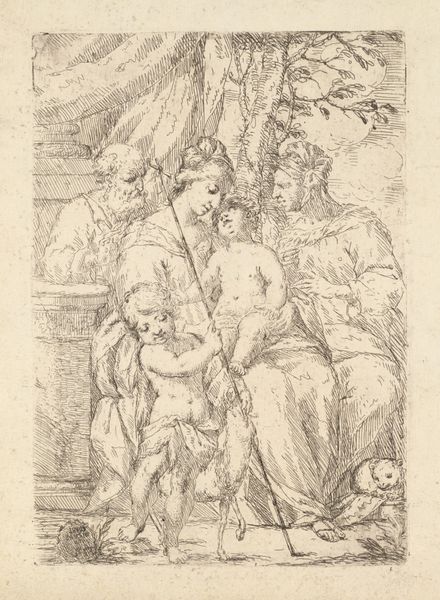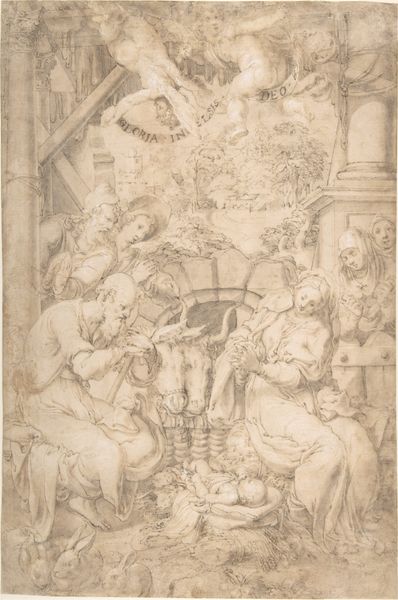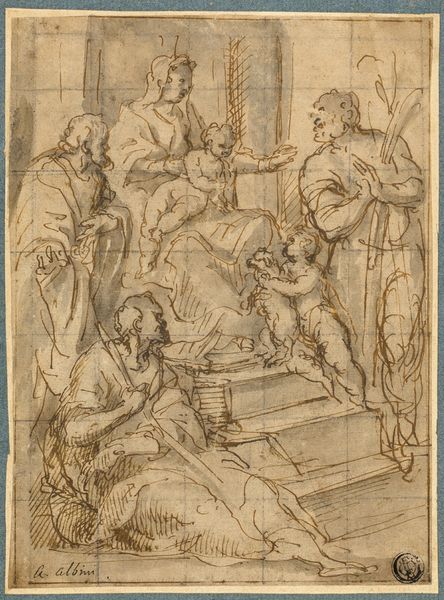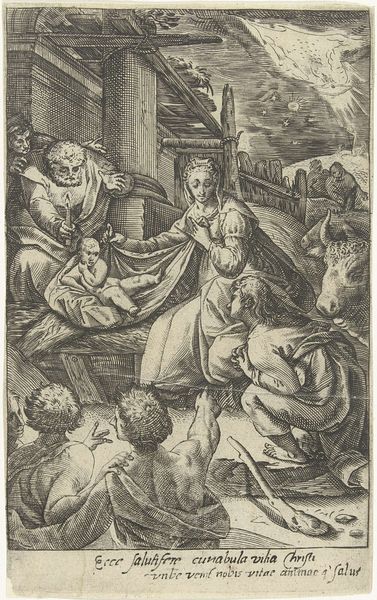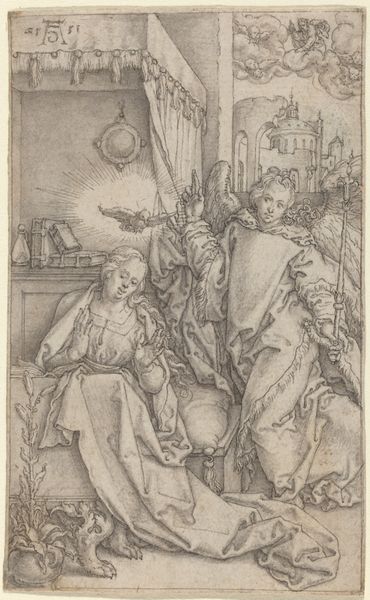
drawing, etching, intaglio, ink, pen
#
drawing
#
allegory
#
narrative-art
#
pen sketch
#
etching
#
intaglio
#
pencil sketch
#
etching
#
figuration
#
ink
#
pen
#
history-painting
#
italian-renaissance
Dimensions: height 297 mm, width 178 mm
Copyright: Rijks Museum: Open Domain
Curator: Looking at this piece, "Birth of the Virgin" by Ferraù Fenzoni, made sometime between 1615 and 1625 using pen, ink, and etching techniques… it really feels like we’re witnessing something private, a very intimate moment captured on paper. Editor: Yes, absolutely! The initial feel, though, is chaotic, bustling even. Everyone's crammed in, there's all this nervous energy and frenetic scribbling giving everything a vibrant, messy life. Curator: It's interesting you say "messy" because it also feels incredibly studied. Consider the positioning of the figures: the mother in bed, attended by others, above a basin where the newborn is being washed. This birth scene, with its hierarchical arrangement, borrows heavily from earlier Renaissance depictions and symbolizes both divine purity and earthly ritual. Editor: Absolutely! Though Renaissance structures underpin the layout, there is something frantic, nervous, even tortured about all the lines crisscrossing and shading every area! Do you see that the artist is really playing with the textures... Like old newsprint and charcoal! Curator: That raw feeling aligns with the shift in artistic sensibilities towards the Baroque, away from idealized beauty and towards more dynamic, emotionally charged expressions. Notice, too, how the light emphasizes certain gestures and faces. Each figure contributes to a larger narrative about grace, maternal love, and even domestic duties in religious stories. The poses and expressions here speak volumes about social norms, and anxieties too. Editor: Do you think so? It almost feels rebellious somehow. To be honest, those frantic strokes scream “sketch” and remind me more of the unfinished energy that dances and coils and squirms underneath, trying to break free! As if we are granted access to the chaotic first strike before things are purified into art. Curator: An interesting tension! But also perhaps a reflection of cultural memory—the continued influence of earlier styles subtly clashing with newer forms of emotional and aesthetic intensity, reminding us how certain themes transcend temporal artistic movements. Editor: It’s funny. What hits you with historical symbolism connects with me at such a primitive gut level. Curator: Exactly! It’s about where history meets individual interpretation – about the ever-shifting landscape between artistic influence and visceral connection.
Comments
No comments
Be the first to comment and join the conversation on the ultimate creative platform.
